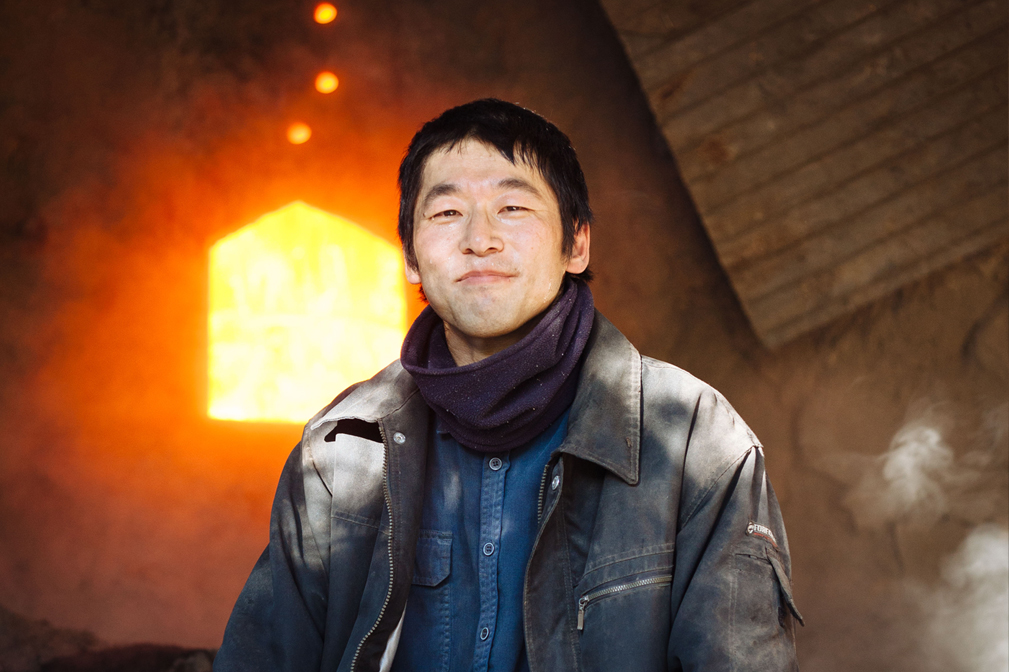Thread by Thread
Essays by Prairie Stuart-Wolff
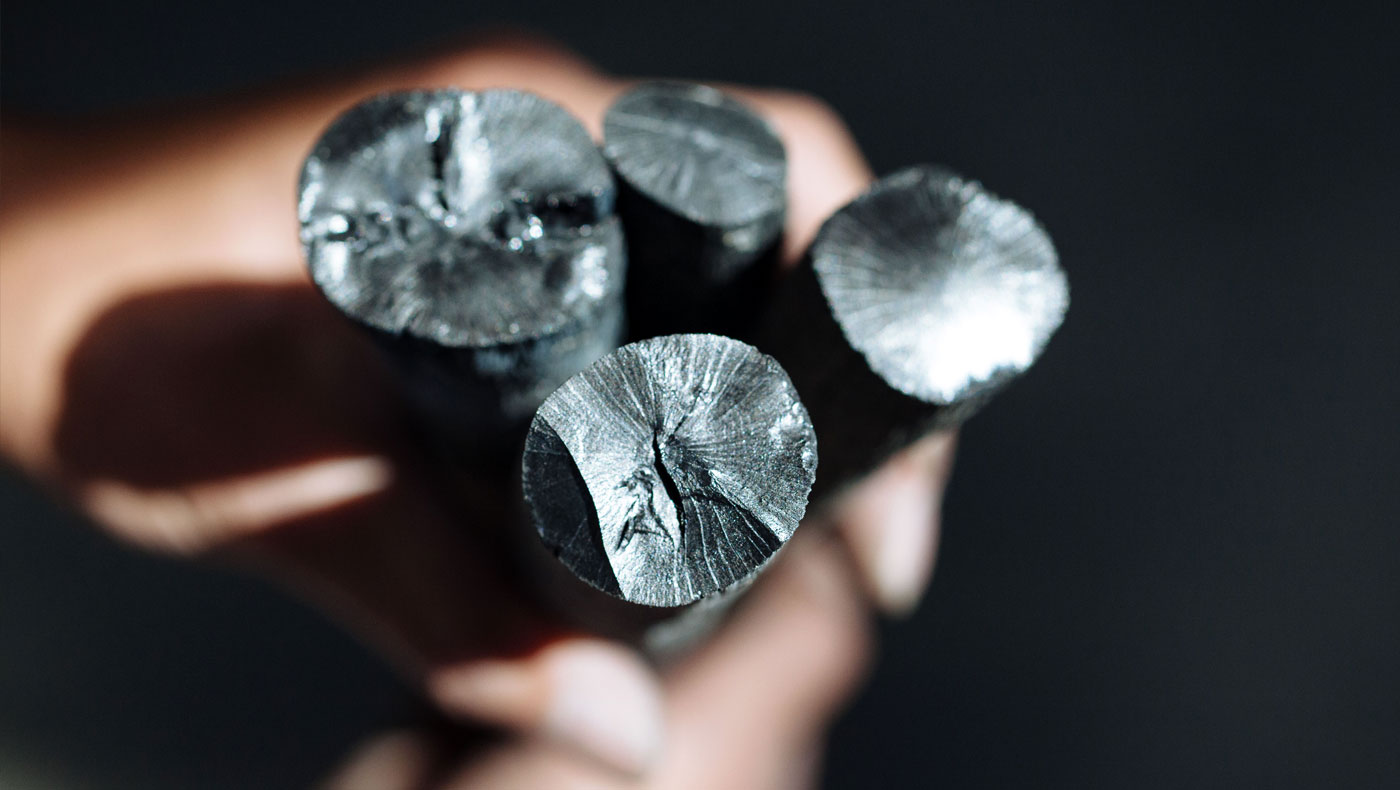
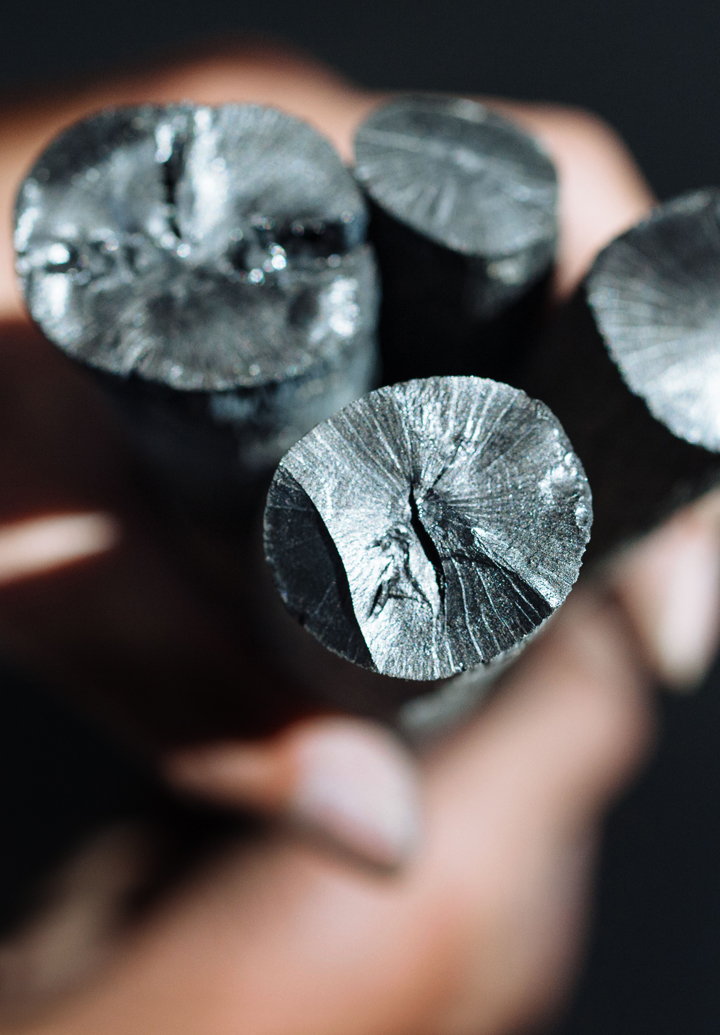
A Long Slow Burn
Scarlet bars of binchotan charcoal are stacked in the sunken hearth. They warm the Irori room steadily on a night as cold as they come in Kyoto. By the end of a long, delicious evening the draft from a high window cracked open is welcome. It raises a whirl of papery scales from the white charcoal that flutter in the glow of the light overhead like a soft snow flurry.
Kyoto chefs favor binchotan made from wild Japanese blue oak gathered in the mountains of Miyazaki Prefecture in Kyushu. Much of it is made in Akimori, a concentrated region of kilns where the average age of a charcoal craftsman is around 70. Kanenobu Umeda tends the firebox of his kiln and works with an energy that belies his age. Everyone is hardworking here he affirms as he describes cutting oak trunks in the hills and hauling them out on his back. Stacked vertically in the kiln, the logs are sealed off and baked for twenty days. Throughout the long process he’ll read the color and scent of the smoke to track their progress as they dry and carbonize.
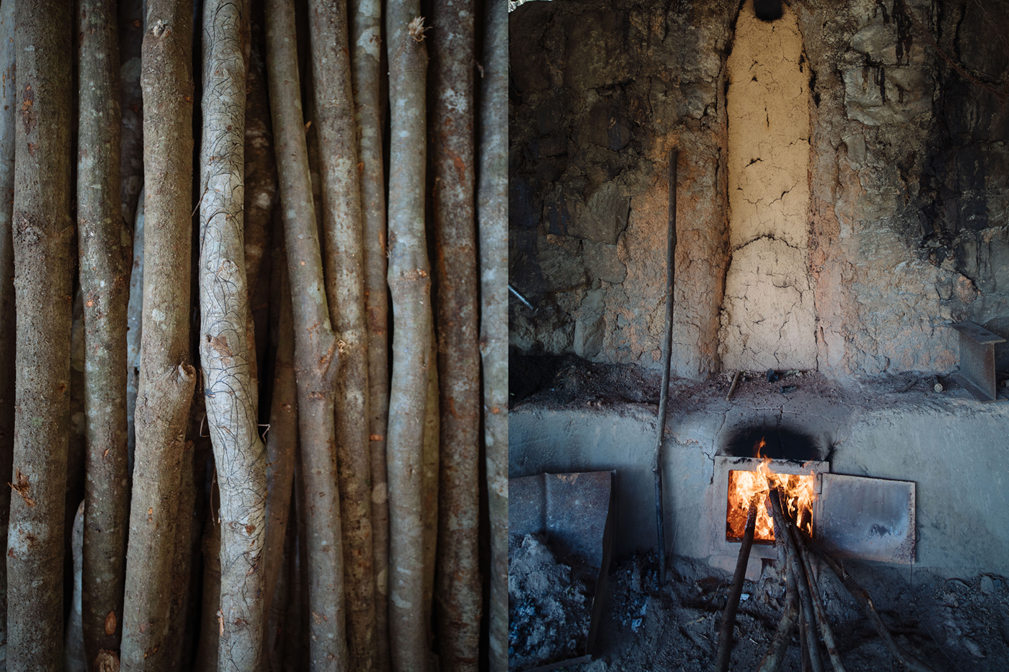
As craftsmen retire and kilns fall idle, a slow wave of younger families is moving in to learn the trade. The Hamada family arrived from Tokyo where they had tired of city life. They wanted to raise their young child in the countryside. Though it’s physically demanding, Yuko Hamada likes working with her hands. She had felt like a cog in the machine at her company job and values seeing a product through from start to finish. But she is still building her stamina. She marvels at how everyone is so healthy and says she feels weak compared to the 60 and 70-year-olds.
At daybreak the air is cold and dark but the door to the kiln has been opened and a flood of oxygen has raised it to searing temperatures. The atmosphere inside is white hot and only the halo of trunks is visible. Batch by batch Kouji Yamada maneuvers a long iron spike supported by a hook on a chain into the kiln and draws forward a pile of glowing sticks. With a metal rake he pulls them out and smothers them in sand and ash. He moved here with his wife and child. He didn’t know a soul but he sought a livelihood working in harmony with the mountains and apprenticed with a charcoal craftsman. He traverses the surrounding slopes where wild oak has been sustainably harvested for decades. He cuts only the trunks of adequate size and leaves the smaller ones to continue growing. The cutting itself promotes new growth that he can return to in a decade or so. It’s not an easy way to make a living but he finds the work rewarding.
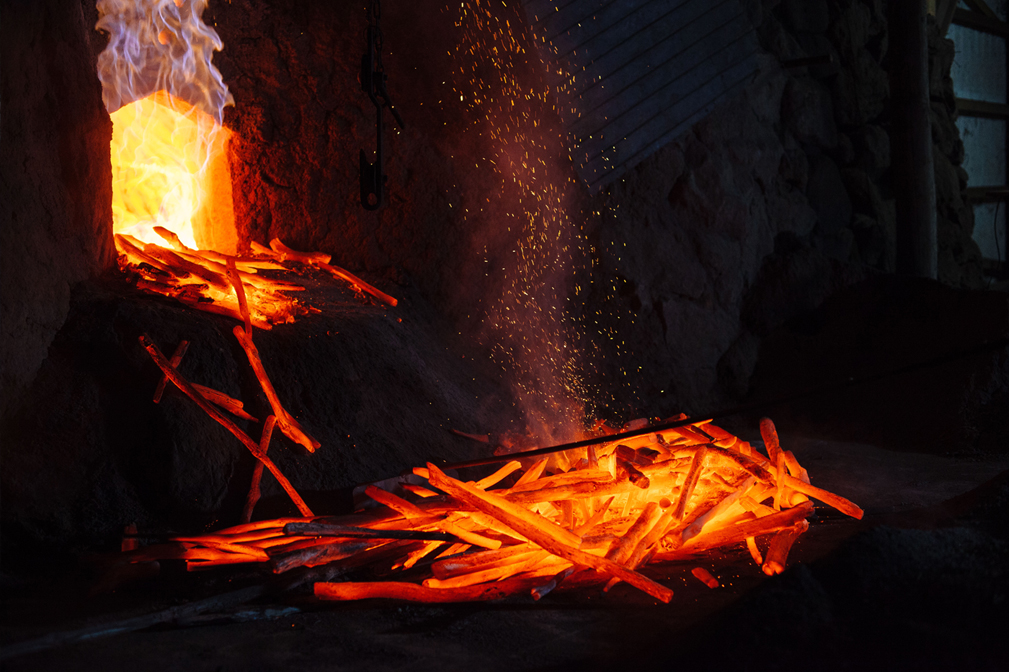

Removed from the ash, the obsidian black binchōtan wears a chalky veil that gives it the name white charcoal. Cleaned and sorted by length and size, it’s ready to ship to Kyoto where the chefs in the kitchen at Kodaiji Wakuden will unpack the rods of pure carbon with smooth ends that shine like black diamonds. As patrons gather around, they’ll stack them glowing hot in the irori hearth to grill the succulent sweet meat of Taiza crab on a cold winter’s eve.
